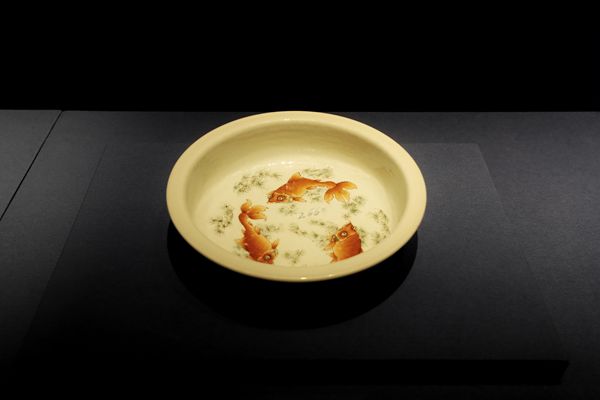 |
|
A Qing Dynasty famille-rose basin with goldfish motif.[Photo provided to China Daily] |
And 34 cultural relics have been selected from the former royal collection to display the Qing emperors' fondness for this auspicious tradition in Chinese culture.
"Goldfish bear the Chinese people's great expectations for a good life," says Da Weijia, curator of the exhibition and deputy director of the department of objects and decorative arts at the museum. "And in literati circles, goldfish also represent the pursuit of elegance and the need for private leisure time away from annoyances."
The Chinese word for goldfish, jinyu, may remind people of the common saying jin yu man tang ("the hall is full of gold and jade"), which signifies abundant wealth and offspring. Goldfish were first domesticated from wild crucian carp during the Southern Song Dynasty (1127-1279).
According to Da, keeping goldfish in gardens and villas became a trend among the royal family and nobles during the mid-Qing Dynasty. Since the reign of Yongzheng (1722-35), it developed into an annual routine for major goldfish ponds around Beijing to send the best fish from their newly-cultivated breeds to the imperial garden in the Forbidden City.